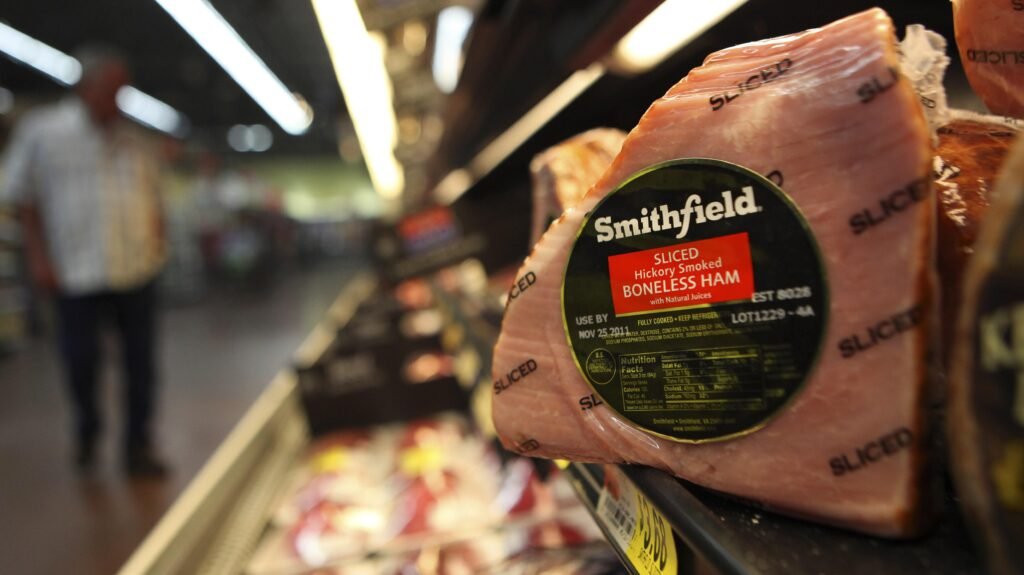Smithfield Foods, the preeminent American pork producer, has recently invigorated its financial operations by returning to the public market via an initial public offering (IPO) on Nasdaq. After years as a privately managed subsidiary of China’s WH Group, Smithfield’s NASDAQ debut marks one of 2025’s most salient agricultural listings. However, investor anticipation met the caprices of shifting markets—proceeds failed to meet the company’s loftier expectations.
Imported bacon aside, it was January 28 when Smithfield Foods’ ticker symbol “SFD” made its return; for some portfolio managers watching markets in real-time that day, appetite did not match hunger. The prior week had seen company estimates as high as $939 million in prospective capital raised with share pricing forecast between $23 and $27 each—ambitious figures at least for a food sector IPO given post-pandemic consumer volatility and interest rate vacillation. In reality? The offer arrived at a muted $522 million after shares were ultimately priced at only $20 apiece—about 25% below those earlier sanguine projections.
In total volume terms, approximately 26.1 million shares were sold—a near-perfect split: half offered by Smithfield itself and half from its parent WH Group divesting from its own holdings. Post-offering calculations leave about 393 million shares outstanding overall; this places market capitalization just short of $8 billion ($7.86 billion if precision is preferred), which is less than both Smithfield’s early-year estimate ($11 billion) but conveniently higher than WH Group told investors late last autumn ($5.38 billion). Quite revealing is how such variability underscores investor sensitivities within protein commodities particularly when global macroeconomics are undulating like they have been recently.
WH Group will retain roughly a 90% stake even after this public floatation—a majority control position that means any dramatic boardroom shifts are highly improbable absent significant subsequent offerings or regulatory intervention (though neither appears remotely imminent). The governance architecture hasn’t shifted fundamentally despite Nasdaq visibility; executive prerogative still originates nearly ten thousand kilometers away in Hong Kong conference rooms with roast pig banquets nearby.
Industry observers describe this listing as pivotal nonetheless—a milestone not solely because it brings renewed scrutiny but because it arms America’s largest pork conglomerate with enriched access to capital markets just when competition intensifies worldwide across supply chains battered by disease risks (African Swine Fever lingers), trade disputes intermittently flaring or subsiding without much warning nowadays perhaps more frequently than before Covid-19 even happened.
Curious turns abound: Although some media called this chronic undervaluation a disappointment—and indeed modest compared to Oatly’s famous haul or Standard Aero’s more recent figure—it nevertheless fortifies Smithfield for imminent expansions into automation technology on plant floors or sustainability projects aimed at reducing methane emissions per processing unit produced annually over time intervals stretching five years out (yet others claim shorter cycles could suffice). Some analysts queried whether recession risk would heavily weigh consumers’ willingness to purchase premium pork products Hershey-style rebranded toward upscale domestic branding efforts—which isn’t always easy since consumer tastes shift rapidly these days—but company officers cited export growth potential especially into emerging Southeast Asian urban centers who increasingly prefer U.S.-origin proteins due quality traceability advantages intrinsic within American FDA frameworks despite temporary currency headwinds making such trade unusually advantageous.
Meanwhile bankers prepping other agribusinesses for their own IPOs speculated about Federal Reserve policy pivots; lower borrowing rates traditionally incentivize investment spree mindsets among strategic buyers—not quite visible yet but perhaps anticipated should interest rates edge downward another time later quarter-three this year even if core inflation refuses to budge early May based on preliminary numbers released late last Wednesday post-close trading session (curiously enough).
Significant too: Despite being Chinese-owned since a blockbuster acquisition back in 2013—the largest-ever purchase then by any Chinese entity of an American icon—Smithfield now stands recast as both trans-Pacific business saga survivor and harbinger for future U.S.-listed food manufacturing entities seeking new liquidity windows amid geopolitical scrutiny sometimes waxing furiously then waning with equally exasperating quickness depending on campaign rhetoric cycles during election years like ’24–’25 already clearly foreshadowed months ago according social media analytics platforms commonly used by institutional traders who rarely admit so publicly though their algorithms act faster than Bloomberg terminals update prices half the time anyway.
Such outcomes seem paradoxical yet fitting: stronger balance sheets attained through weaker-than-forecast proceeds invite new speculation about next stages while leaving room—for error or opportunity—for creative restructuring moves should product demand unexpectedly surge owing say to viral TikTok recipe crazes involving spiral-cut ham sandwiches garnished with locally-sourced microgreens rather than classic Southern coleslaw whose sales mysteriously plateau every autumn except last year when they didn’t quite meet fourth-quarter forecasts either due reasons still under review internally deep inside corporate finance departments somewhere east of Richmond where auditors keep records safe beneath lock-and-key sometimes forgetting which drawer hides what paperwork until fiscal deadlines loom larger each spring no matter what anybody claims publicly otherwise stating confidently otherwise usually in press conferences only partially attended anymore unless catering includes free samples nobody actually eats before leaving neatly stacked plates behind afterwards hours later cleaned away silently by overnight staff unnoticed once again except maybe tonight!


